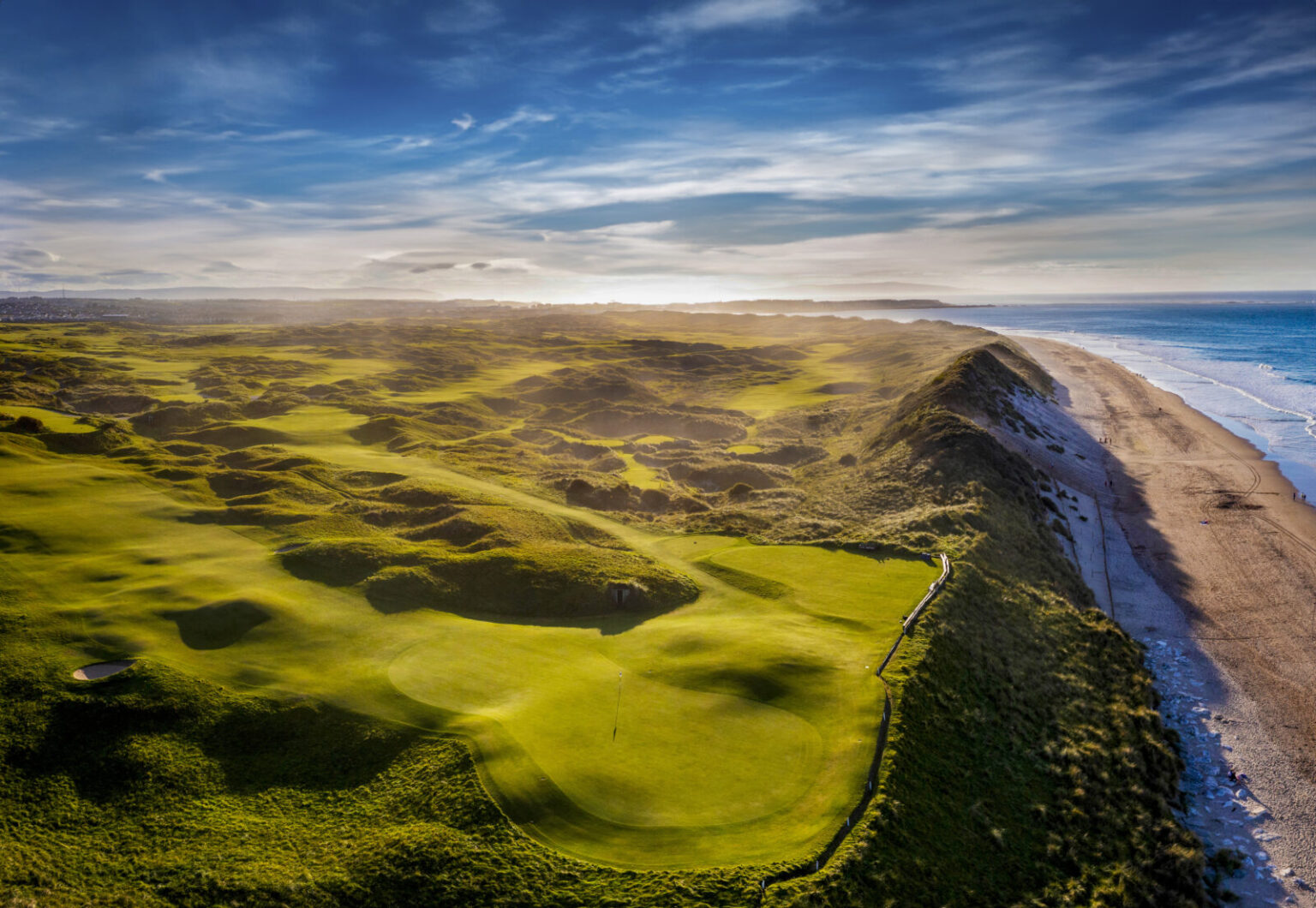Later, we headed to one of the true institutions of Irish golf culture: the Harbour Bar. Packed with memorabilia and stories, it’s arguably the finest 19th hole in the country maybe the world.
Jerseys, photographs, scorecards, and signatures line the walls, chronicling a rich history of visiting golfing greats.
The bar has become an unofficial clubhouse for the international golf community.
We soaked in the atmosphere over a couple of pints before calling it a night, there was a big round ahead.
THE DUNLUCE AWAKENING
After a restful night at Elephant Rock and a hearty breakfast, the time had come. Royal Portrush Golf Club’s Dunluce Links awaited, the crown jewel of Northern Irish golf and the host of this year’s Open Championship.
It had been more than two decades since my last visit to Portrush, and much had changed, not least the addition of two new holes introduced ahead of Shane Lowry’s triumphant 2019 Open win.
The clubhouse, rich with history and alive with Open memorabilia, was a joy to explore. The Claret Jug gleamed in its glass case, surrounded by photos and stories of legends past.
We teed off as dawn broke, first on the course, with a stiff 30mph wind rolling in off the Atlantic. Gary, our Forecaddie, was an absolute gem, full of insight, good humour, and stories from the Open. In 2019, he was even asked to caddie during the qualifying rounds.
The wind made every shot an adventure, and Gary rated the conditions a solid 9/10 on the difficulty scale.
The back nine brought more stability in my game, aided by a quick bite and a coffee at the halfway hut.
By the end of the round, I was reluctant to leave the fairways behind. This was links golf at its most thrilling, most authentic, and most humbling.
Still, nothing could detract from the sheer quality of the course. Each hole is a masterpiece, rugged, strategic, and breath-taking. The highlight came at the fearsome Calamity Corner, the par-3 16th stretching 235 yards across a gaping chasm.
Armed with my driver, I managed to find the back of the green and two-putted for a proud par. It’s one of the most iconic par-3s in golf and for good reason.
FAREWELL FROM THE CLUBHOUSE
We wrapped up with lunch back at the Royal Portrush clubhouse, swapping stories and soaking in the view one last time.
There’s a special energy in the air here, part history, part community, and part elemental force from the coast itself.
Driving back to Belfast to catch the flight home, I reflected on what made the trip so unforgettable.
Yes, the golf was world-class. Yes, the scenery was out of this world. But it was also the people, the caddies, the hoteliers, the restaurateurs, and fellow travellers, who made it special.
Northern Ireland’s Causeway Coast offers much more than a golf trip. It’s a full-bodied experience, rich in culture, wrapped in history, and topped with a touch of magic.
Travel Tips: Playing & Staying Along the Causeway Coast
GETTING THERE
Fly into Belfast International (BFS) or George Best Belfast City Airport (BHD). Both offer easy access to the Causeway Coast (approx. 1–1.5 hrs by car). Car hire is essential to explore the area properly — especially if you’re hauling golf clubs. Golf News flew with Easyjet www.easyjet.com
BEST TIME TO VISIT
May–September offers the best chance of decent weather and course conditions. Summer evenings are long — perfect for twilight rounds.
PRO TIP
If playing Royal Portrush, request a forecaddie they’ll help you navigate the wind, read the greens, and add local colour to your round.
REMEMBER
Northern Ireland is part of the common travel area, meaning there are no travel restrictions for British travellers.
For more information visit: www.Ireland.com/northernireland
Read the full article here

